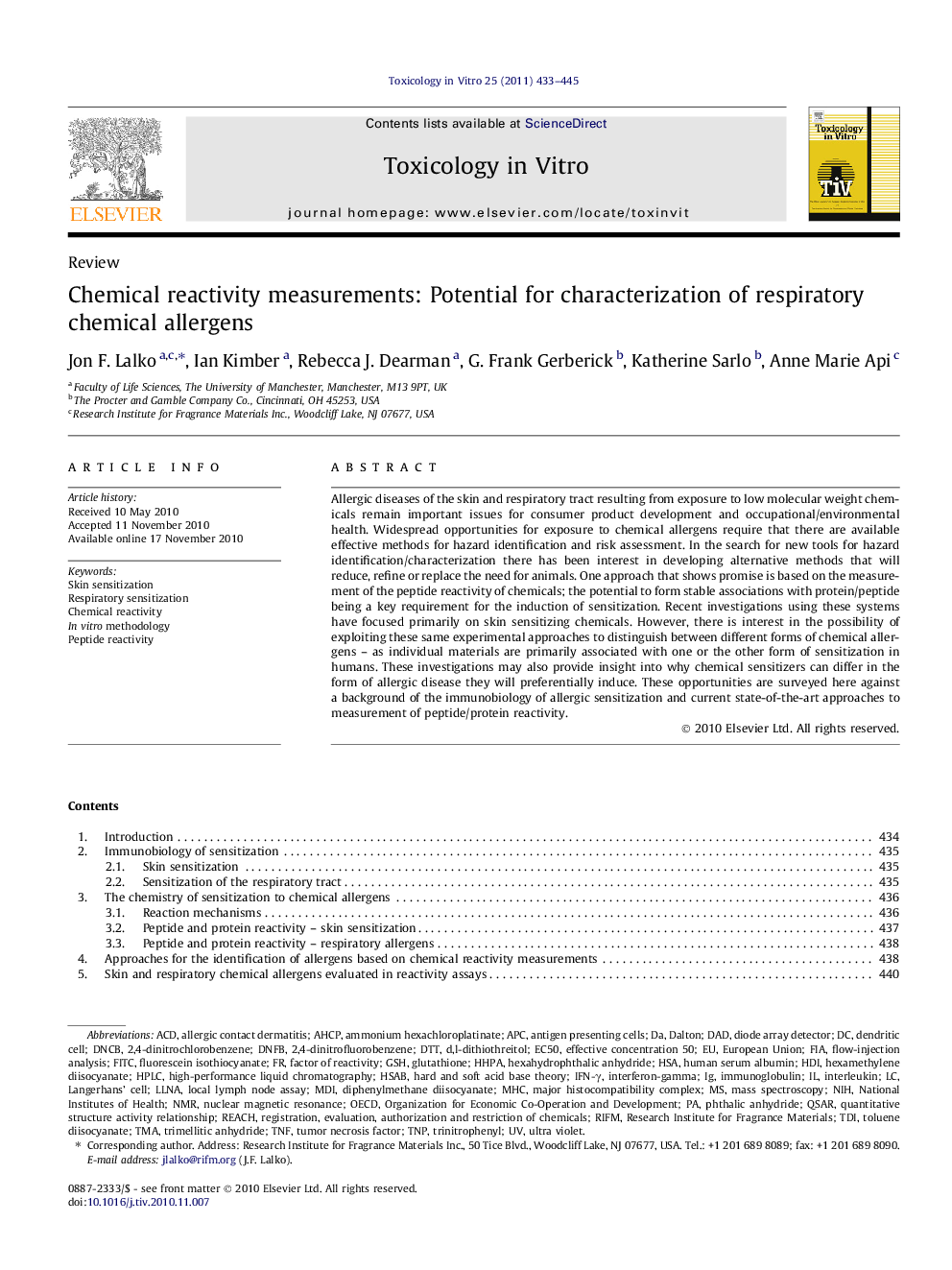| Article ID | Journal | Published Year | Pages | File Type |
|---|---|---|---|---|
| 5863101 | Toxicology in Vitro | 2011 | 13 Pages |
Allergic diseases of the skin and respiratory tract resulting from exposure to low molecular weight chemicals remain important issues for consumer product development and occupational/environmental health. Widespread opportunities for exposure to chemical allergens require that there are available effective methods for hazard identification and risk assessment. In the search for new tools for hazard identification/characterization there has been interest in developing alternative methods that will reduce, refine or replace the need for animals. One approach that shows promise is based on the measurement of the peptide reactivity of chemicals; the potential to form stable associations with protein/peptide being a key requirement for the induction of sensitization. Recent investigations using these systems have focused primarily on skin sensitizing chemicals. However, there is interest in the possibility of exploiting these same experimental approaches to distinguish between different forms of chemical allergens - as individual materials are primarily associated with one or the other form of sensitization in humans. These investigations may also provide insight into why chemical sensitizers can differ in the form of allergic disease they will preferentially induce. These opportunities are surveyed here against a background of the immunobiology of allergic sensitization and current state-of-the-art approaches to measurement of peptide/protein reactivity.
